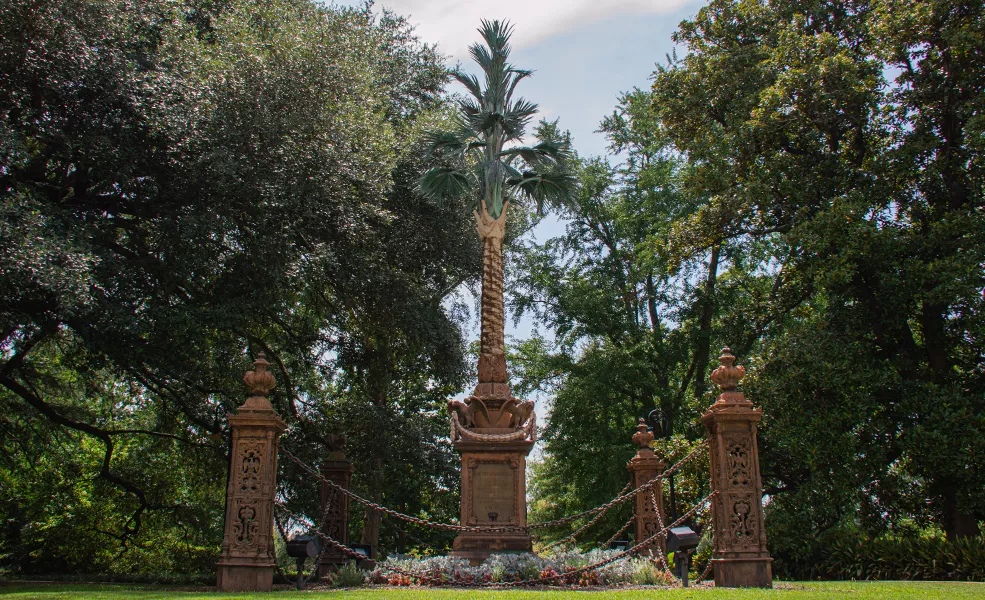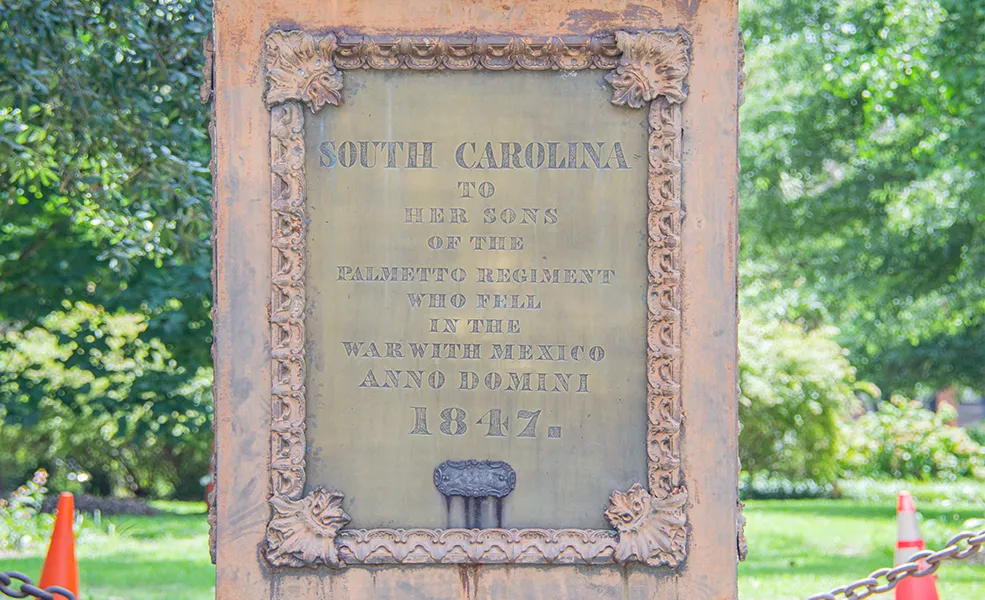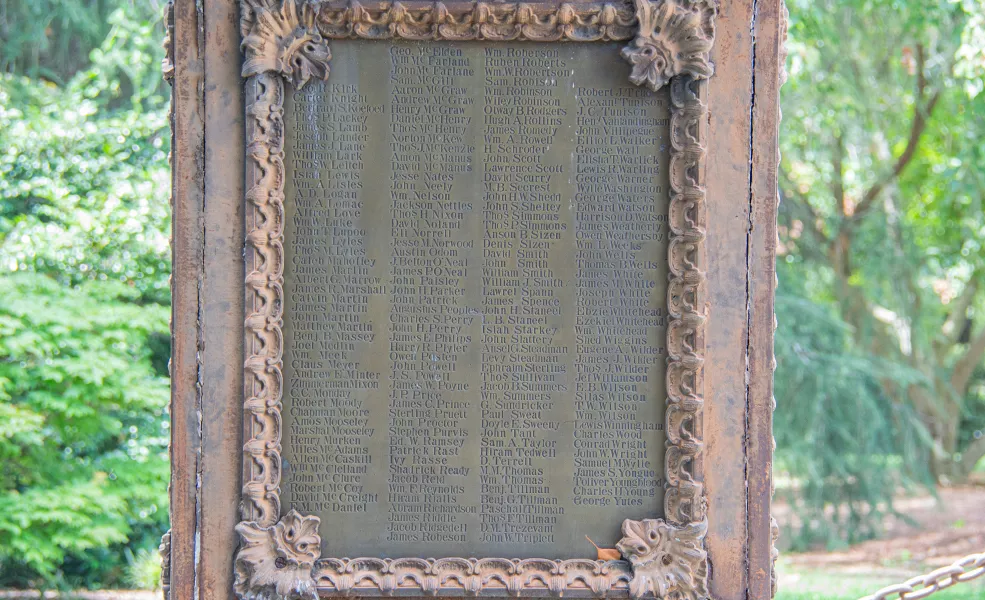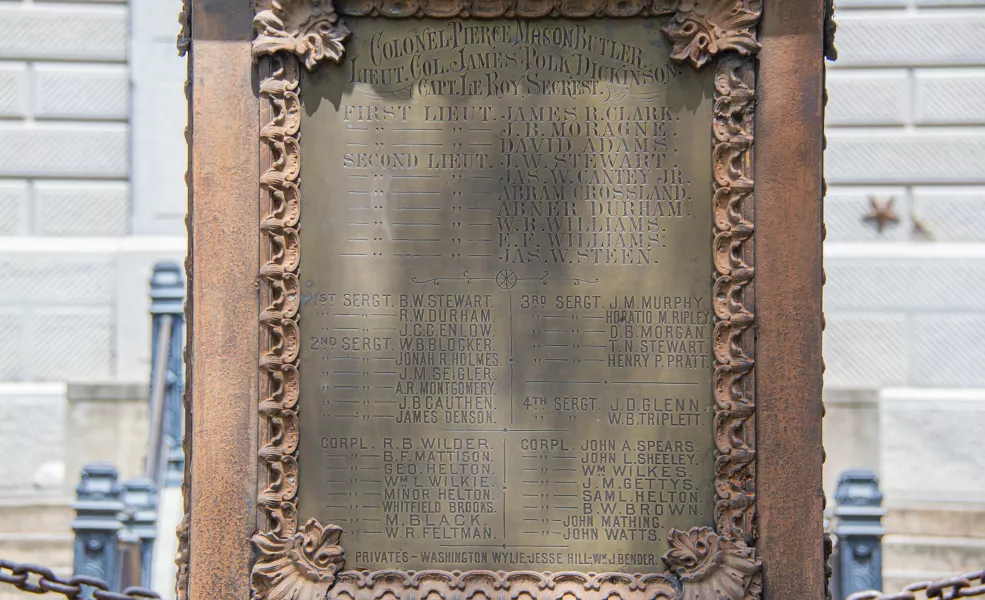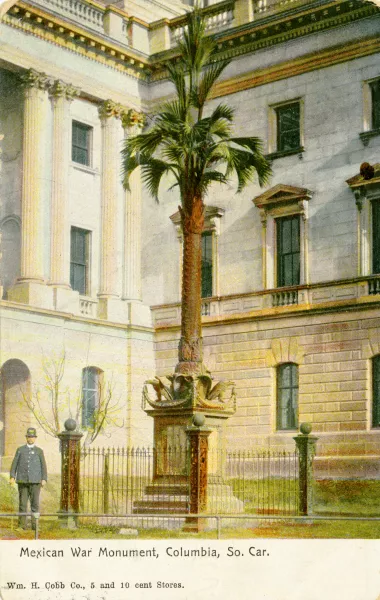Palmetto Regiment Monument
The twenty-foot-tall bronze, copper, and cast iron palmetto tree is one of the country’s few monuments to the Mexican-American War. Charleston artist Christopher Werner and likely enslaved craftsmen created the tree to memorialize the veterans of the state’s Palmetto Regiment, which fought to annex Mexican territories in what are now Texas, California, Nevada, Utah, New Mexico, Arizona, Colorado, Oklahoma, Kansas, and Wyoming. Southern states, including South Carolina, mustered soldiers for the cause in hopes that slavery could be expanded westward. Of the regiment’s 1,048 men, 441 did not return. Among them was the commander and former Governor Pierce Mason Butler. The tree combines Greek Revival stylistic elements (such as the large acanthus leaves at the base of the tree’s trunk) with more Romantic ones (including the fanciful scrollwork and crowns on the enclosure’s pedestals). Werner installed it on the south side of the State House in 1854, where it remained through the Civil War and the Burning of Columba in 1865, when it suffered “the loss of a number of branches,” according to historian William Gilmore Simms. It moved to the front of the State House in 1875, after which it was damaged and repaired multiple times after storms and tornados in the following decades. Werner originally designed ornate arches to connect each of the four ornate posts that surround the monument, but they were later replaced by the chains that connect them today. The entire monument was relocated to its current site about 1969.
